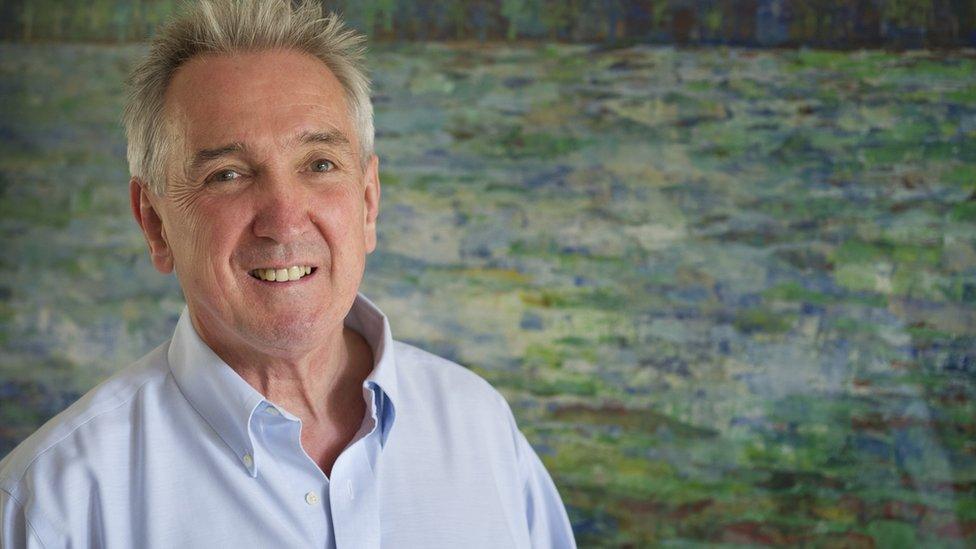Eating disorders: Why CBT-E works
- Published

England's top doctor says she wants everyone with an eating disorder to be able to access a certain type of psychological therapy online.
It's called enhanced cognitive behavioural therapy (CBT-E) and Dame Sally Davies wants it available to all age groups across the country.
The treatment can be used for any eating disorder and is very effective.
But what is CBT-E and how does it work? We asked the man who invented the treatment, Professor Chris Fairburn.
CBT-E is a talking therapy designed specifically for eating problems
"It differs according to each person - so it fits their exact eating problem," says Prof Fairburn.
"Therapists and the person with the problem work together to find out why it's continuing and then design a treatment together to break out of it."
Control is a key part of the treatment. People with eating disorders often feel out of control.
The average treatment can last between four to six months with up to 30 intensive sessions.
Even though it differs from person to person, there is a typical treatment
First there's an assessment to find out what's wrong. Then there's an educational phase, to help the person understand why they're locked into an eating disorder.
According to Prof Fairburn, it's then all about how to break out from the problem.
"What people think about their body and how they see it is often very problematic, especially those with anorexia or bulimia.
"CBT-E helps people realise the way they're seeing their bodies is actually quite inaccurate - that what they're doing to asses their shape makes it seem larger than it is.
"We help them to step back, see their body for what it is and help them make their body less important in their life - to give them some perspective," he says.

People who've had CBT-E have very low relapse rates
A major problem for people with eating disorders is they tend to slip back into their bad old ways. And when they do, they can react very negatively to setbacks.
"People can feel overwhelmed by a setback. We help them to understand why it's happened and not to be upset. People are taught how to snuff out the problem quickly.
"Gradually, those setbacks happen less and less. People learn how to be in control."
'We show people they can get their life back'
Prof Fairburn says CBT-E works because therapists don't try and fight the person with the eating disorder.
"That makes people dig in. Or they avoid the issue and don't talk about it.
"We see people who're really scared but don't know how to change and are very wary of asking for help. We win them over and do talk about the difficult things.
"We show we can work together and help them get their life back."

Prof Chris Fairburn
People do look for help online but that's less effective than face to face sessions.
Dame Sally Davies says she wants CBT-E available online for anyone with an eating disorder.
But Prof Fairburn doesn't think that's the solution.
"Most young people are very ambivalent about getting help and drop off websites like a rocket. Face to face sessions are much better.
"We are developing an online version but it will mainly be for people in the early stages of a disorder," he says.
But Prof Fairburn does believe the government should be doing more.
"Some eating disorder services do offer CBT-E but around the country, it's patchy.
"Everyone should have access to it, wherever they live, whatever their age - their NHS service should provide it."
For more information on CBT-E talk to your doctor.
You can get support and help on eating disorders via this BBC Advice page.
For more stories like this one you can now download the BBC Newsbeat app straight to your device. For iPhone go here, external. For Android go here, external.